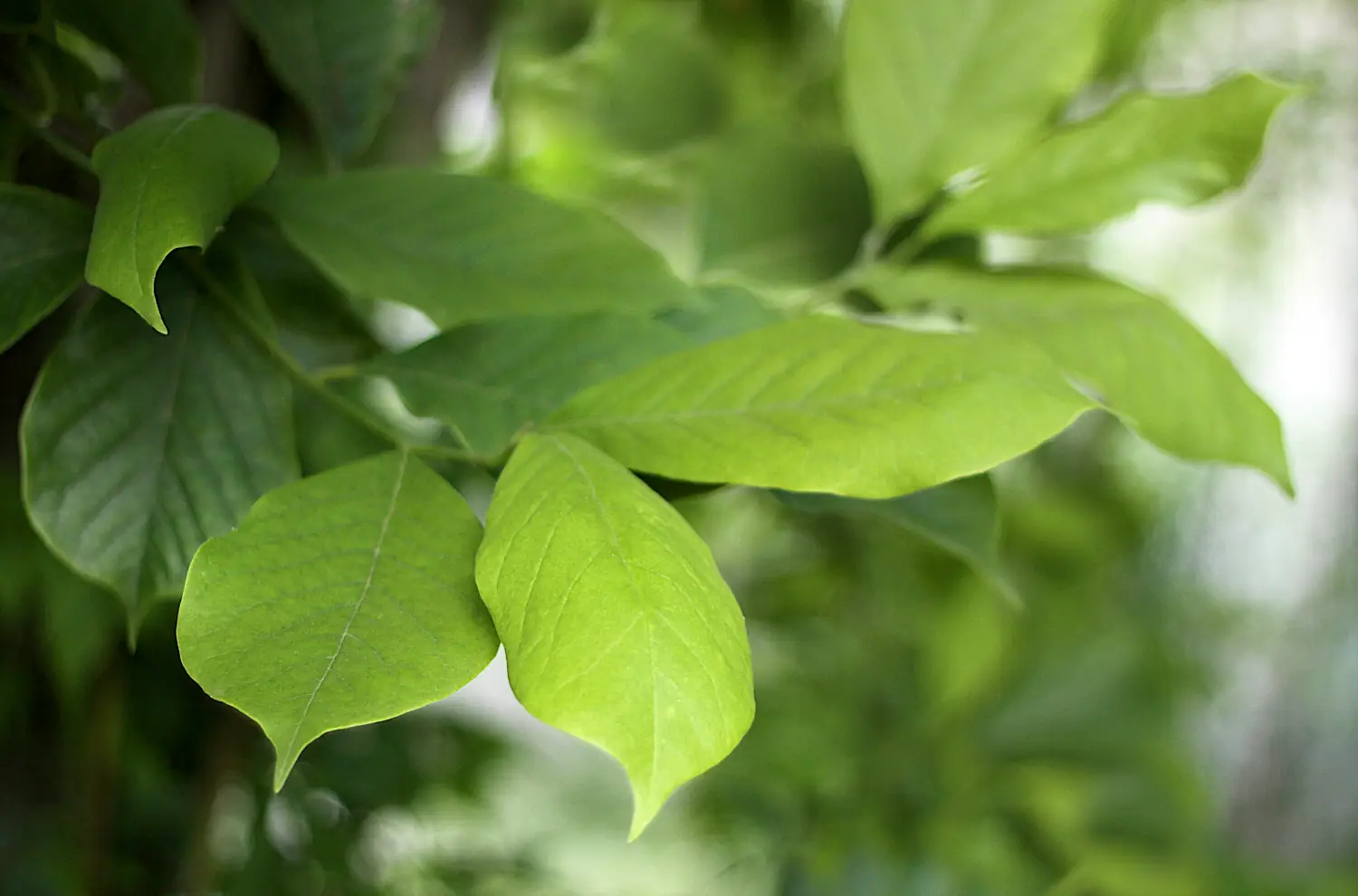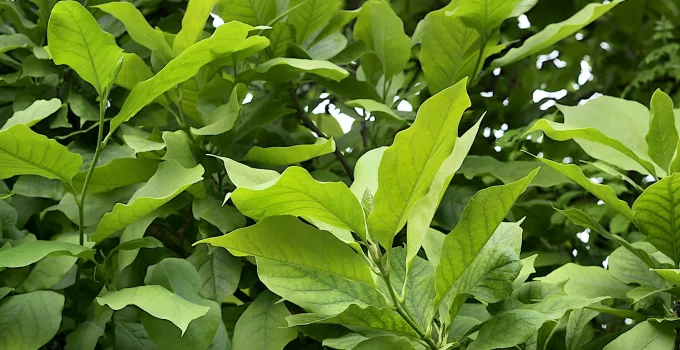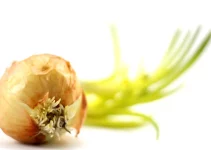Magnolias signify spring, the beginning of sunny days, warmer days, carefree smiles speaking of childhood and all that’s good and spectacular in nature and in order to enjoy all that we need to see if we need to look for the best fertilizer for magnolia tree.
Do we even need to fertilize our magnolia trees? This question, we could answer easily because every plant likes fertilizers that match its growing needs. That’s why I wrote articles on the best fertilizer for cactus or the best fertilizer for crotons or fertilizers low in nitrogen and things like that.
However, when it comes to these magnificent trees, we don’t necessarily have to use a fertilizer. But it definitely helps if we want the witness the most gorgeous blooms we’ve ever seen.
For now, it remains to be established what are the needs of these particular trees.
What do we need to know so that we can gaze at their wonderful colors that always make me think of Claude Monet’s paintings?
Let’s see what we need to learn about growing the most bountiful magnolias, so full of flowers that they create their own universe of pink, white, yellow, and purple hews. A world that makes us dream of summer days soon approaching. Hopefully, they’re always happy days.
The description from the New York Botanical Gardens is the one I love the most.
They say: “Magnolias’ fragrant flowers are some of the first to herald spring’s arrival…From March through April, these graceful trees bloom in an array of pastel colors, from luscious whites to pale yellows to deep pink and purple hues. You’ll find a stroll along Magnolia Way never fails to delight with the promise of warm days to come.”
Table of Contents
Best Fertilizer For Magnolia Tree Reviews

The great planter E. H. Wilson stated: “No group of trees and shrubs is more favorably known or more highly appreciated in gardens than magnolias and no group produces larger or more abundant blossoms”.
If we want to achieve this picture in our gardens in the spring, one thing we might need to do is to look for the best fertilizer for magnolia tree. Furthermore, we absolutely have to talk in-depth about how to care for these magnificent shrubs or trees.
If you don’t want to complicate yourself with looking for a specific fertilizer with a specific N-P-K ratio, then I recommend getting an all purpose fertilizer. It can be used for the beautiful growth and blooming of a variety of plants. Such a fertilizer is the Jack’s Classic All Purpose 20-20-20 Water Soluble Plant Food.
If we’re looking for more specific fertilizers, we should know that magnolia often becomes deficient in nitrogen and iron. Most fertilizers will provide the necessary nitrogen these trees might need.
According to this, a complete fertilizer with a NPK ratio of 16-4-8, 12-4-8, 12-6-6 should work for most trees and shrubs.
However, since magnolias are flowering trees, I prefer focusing on fertilizers with a high P (phosphorus) ratio, like the Schultz Bloom Plus Water Soluble Plant Food.
Providing the correct amount of phosphorus to plants during the flowering stage is an essential bloom booster. Those are the types of fertilizers I prefer using for magnolias.
Over-fertilizing with nitrogen can lead to very few blooms and weak buds.
Phosphorus is key if we want our trees to grow a strong root system, develop flowers, and produce fruit.
Potassium contributes to the root system’s growth and increases the size of flowers and fruit.
1. Jack’s Classic All Purpose 20-20-20 Water Soluble Plant Food: Overall the Best Fertilizer For Magnolia Tree
The Jack’s Classic All Purpose 20-20-20 Water Soluble Plant Food is truly amazing if you want to feed all your plants, trees, and shrubs with the same plant food.
If you don’t want to get too much into the details of NPK ratios.
What each nutrient does.
And which is the proper ratio for your specific plant.
Then choosing to use an all purpose plant food with a 20-20-20 or 10-10-10 NPK ratio is always going to be the best solution for growers who don’t have the time or interest to do too much research.
Jack’s Classic All Purpose 20-20-20 is considered the industry’s standard of general purpose fertilizers by professional growers.
Features
Jack’s Classic All Purpose 20-20-20 Water Soluble Plant Food with micronutrients comes in a 1.5 pound quantity.
It’s certainly not a lot if you have a lot of plants to feed regularly but it is more than enough for a few. It will last a good deal.
It is designed for all indoor and outdoor plants, trees, vegetables, and turf. Just as its name suggests, it’s truly all purpose.
The examples written on the packaging are: foliage plants, roses, vegetables, shrubs, evergreens, perennials, bulb, impatiens, coleus, gardenias, geraniums, marigolds, lilies, basil/herbs, hibiscus.
Magnolia isn’t mentioned but these examples illustrate the wide variety of plants that the Jack’s Classic All Purpose 20-20-20 Water Soluble Plant Food can feed. We can definitely use it on whatever we want.
Another important aspect is that it feeds both through the roots and the leaves.
If you want to get really advanced, you can use it in combination with the Jack’s Classic Blossom Booster 10-30-20 that I will review just below.
These two used together are a winning combination. These two together can give our plants greener leaves, more flowers, and brighter colors.
How to use
We are advised to apply every 7-14 days for best results.
You can do it less often, especially if you’re using the Jack’s Classic Blossom Booster 10-30-20 in combination with this all-purpose plant food from the same manufacturer.
For outdoor plants we need to add 1 tablespoon per gallon of water.
And then we do a thorough watering.
However, one thing I recommend about feeding magnolias is that we should stop our fertilizing schedule by the end of July or at the beginning of fall to let the tree prepare for winter.
2. Jack’s Classic Blossom Booster 10-30-20
As I’ve already mentioned, the manufacturer recommends using the Jack’s Classic All Purpose 20-20-20 Water Soluble Plant Food in combination with this Jack’s Classic Blossom Booster 10-30-20.
It can help us give our plants greener leaves, more flowers, and brighter colors.
That certainly applies to what our objectives are for a lot of our plants.
Features
The Jack’s Classic Blossom Booster 10-30-20 is water soluble plant food for flowering plants.
As you can see, the phosphorus ratio is the highest.
The NPK ratio is 1-3-2. That’s an obvious indication that it’s designed specifically for flowering plants.
The plants examples offered on the packaging are: hydrangea, bougainvillea, hibiscus, orchids, violets, fruit trees, all flowering beds, containers, hanging baskets, blackberry, raspberry, strawberry, blueberry bushes, all types of garden vegetables.
In a way, this is also an all-purpose because it can serve a wide variety of plants, whether they’re grown outdoors or indoors.
It can also be used as a transplant solution.
How to use
The instructions are the same,
For outdoor plants add 1 tablespoon per gallon of water.
We are instructed to use every 7-14 days for the best results and do a thorough watering.
Of course, we can use the Jack’s Classic Blossom Booster 10-30-20 all on its own. We don’t necessarily have to combine it with their all-purpose that I reviewed above. We can use either individually and still obtain fantastic results.
For indoor plants add ½ teaspoon per gallon of water every time you water your plants. Or ½ teaspoon per gallon of water every other week.
3. Schultz Bloom Plus Water Soluble Plant Food 10-54-10
If there is one thing you might immediately notice about the Schultz Bloom Plus Water Soluble Plant Food 10-54-10 is that it’s quite an affordable product.
Well, the Espoma Organic Holly-tone Natural & Organic Plant Food 4-3-4 with its big bags is really cheap. The cheapest among all these picks for the best fertilizer for magnolia tree. But the Schultz Bloom Plus Water Soluble Plant Food also has a decent selling price.
Features
The important thing is that this plant food promises big beautiful blooms. It’s certainly something we want to see from our flowering trees.
And it is one of my favorite picks for the best fertilizer for magnolia tree.
This product has an incredibly high ratio of phosphorus. It also has a good amount of nitrogen and potassium. These two important nutrients aren’t neglected either.
The 1.5 pound quantity is good enough for feeding multiple plants, trees or shrubs throughout the season.
People who have used the Schultz Bloom Plus Water Soluble Plant Food 10-54-10 mention bountiful and beautiful blooms.
One person uses this consistently when they water their flowering plants and they bloom bountifully and beautifully all season long. The blooms become so bountiful and beautiful, like what we see in magazines.
Someone has been using this Schultz Bloom Plus Water Soluble Plant Food 10-54-10 for over 15 years.
The plants look beautiful and it is easy to use.
Someone else mentions that it’s very versatile because it can also be used on some vegetables.
4. Down to Earth All Natural Rose & Flower Bulb Fertilizer Mix 4-8-4
Even though it mentions roses in the name, it is quite versatile.
The Down to Earth All Natural Rose & Flower Bulb Fertilizer Mix 4-8-4 can be used on a wider variety of plants other than roses.
Of course, people who grow roses are the most frequent buyers. And people love the results they get.
Someone mentioned in their user review that their vegetable and flower plants are thriving since they applied this fertilizer.
Another user mentions that it works really well in indoor and outdoor environments.
All in all, I really like the Down to Earth All Natural Rose & Flower Bulb Fertilizer Mix 4-8-4. Maybe you can grow both roses and magnolias so you can feed both types of plants with the same product.
Features
I love that we can choose from 3 different sizes: 1 pound, 5 pounds, and 15 pounds.
It’s great that growers can choose from these different quantities. All 3 sizes are quite affordable.
Plus, I’m sure that there will be a lot of growers who will love that it’s a natural fertilizer with a 4-8-4 formula.
It supplies nutrients for vigorous growth and sensational flowers.
The Down to Earth All Natural Rose & Flower Bulb Fertilizer Mix 4-8-4 is a special blend that:
- provides ample nitrogen for vigorous growth
- extra phosphorus for beautiful blooms
- and potassium and trace elements for healthy plant stock
Overall, it has the perfect NPK ratio, that’s easy to see.
Interestingly, it can also be great for starting edible bulbs, like garlic and onion.
We can apply it when planting new roses, bulbs, perennials. And use throughout the season when new growth appears on existing plants.
It can be used in organic production on vegetable gardens, flower beds, containers, and houseplants.
The ingredients are: fish bone meal, langbeinite, blood meal, alfalfa meal, seabird guano, rock phosphate, humates, and kelp meal.
The good news is that many growers mention that it doesn’t have a fishy smell, which some natural and organic plant foods can certainly have and it can be very unpleasant.
We can use the Down to Earth All Natural Rose & Flower Bulb Fertilizer Mix 4-8-4 without worrying about unpleasant smells.
How to use
For roses & perennials, the category to which magnolia trees belong, we are instructed to side dress ¼-½ cup per plant.
The feeding is done once each month during the growing season.
For new transplants, add ½-1 cup per hole, mix into soil and water well.
We also get feeding instructions for containers, vegetable gardens & flower beds, and bulbs.
5. Espoma Organic Holly-tone Natural & Organic Plant Food 4-3-4
The Espoma Organic Holly-tone Natural & Organic Plant Food 4-3-4 is among the biggest quantities we can get when we’re looking for the best fertilizer for magnolia tree.
The 8 pound bag is a huge quantity, which can be wonderful if you have a lot of plants to feed.
Moreover, the price, given that 8 pound quantity, is one of the cheapest.
But we can also buy this plant food in bags of 4 pounds, 18 pounds, 36 pounds. The price is cheap for all.
These are two important reasons for really liking the Espoma Organic Holly-tone Natural & Organic Plant Food 4-3-4 as the best fertilizer for magnolia tree.
Let’s see what it can do for our plants.
Features
The Espoma Organic Holly-tone Natural & Organic Plant Food 4-3-4 is used for better blooms and foliage.
It is described as being: long lasting, slow release, original choice for acid loving plants: rhodos, camellias, hydrangeas, azaleas, blueberries, evergreens, strawberries, etc. This list also includes magnolia trees.
Holly-tone is the original plant food for all acid loving plants. It breaks down slowly to provide a long-lasting reservoir of plant nutrients.
It is a rich blend of the finest natural and organic ingredients enhanced with their Bio-tone formula.
How to use
It is best used in spring and fall on flowering and evergreen shrubs.
However, when it comes to feeding magnolias, I only recommend using it in the spring.
I would say that one application in the spring can be enough for the whole season. The Espoma Organic Holly-tone Natural & Organic Plant Food 4-3-4 is a slow release fertilizer.
Apply the soil around the drip line of the plant and then water thoroughly.
The instructions are not the most simple to implement but we don’t have to be perfectly right, our plants will benefit anyway.
It is ready to use and requires no mixing.
For trees, we are advised to use 1 pound (3 cups) per inch of trunk diameter. Now we understand why this product comes in bags of 4 pounds, 8 pounds, 18 pounds, and 36 pounds.
Dig 3 inch wide holes around the drip line that are 12-18 inches deep and 2-3 feet apart. Divide the Holly-tone evenly, pour it into holes, backfill the holes with soil, and water thoroughly.
A mature tree typically spreads out about 1.5x the diameter of the crown. So you can spread out those 3 holes quite far.
Of course, it is approved for organic gardening.
Best fertilizer for magnolias buying guide
We established that magnolias will benefit from an all purpose fertilizer if you want to buy a product that can be used for absolutely all the plants, trees, and shrubs that we’re growing.
An all purpose 20-20-20 fertilizer can be great for people who don’t want to concern themselves too much with specific types of fertilizers.
I also recommended more specific products with a high or good concentration of phosphorus because this is the element that will ensure that our magnolia will have beautiful, big, abundant flowers.
A high-phosphorus plant food will serve as a bloom booster for our flowering trees.
In an NPK ratio, the first number represents the nitrogen, the second number represents the phosphorus, and the third number is potassium.
The Schultz Bloom Plus Water Soluble Plant Food has an incredibly high phosphorus content. If we have always had trouble with our trees flowering, then the Schultz Bloom Plus Water Soluble Plant Food should definitely be considered. Use it at least for a season.
My other two recommendations, the Down to Earth All Natural Rose & Flower Bulb Fertilizer Mix 4-8-4 and the Espoma Organic Holly-tone Natural & Organic Plant Food 4-3-4 are also amazing with very nice NPK ratios.
How to use fertilizers for magnolia
Basically, we must start applying fertilizer in the early spring.
Generally, I recommend following the instructions that come with each product. These instructions will be written on the packaging and are very easy to follow.
I only have one additional thing to add when it comes to knowing how to fertilize magnolia trees.
I recommend stopping fertilizing magnolias after the end of July. We need to allow these plants to harden off before winter sets in.
So, follow the instructions that come with the particular fertilizer you’ve bought but try to end the feeding before the end of July or at the beginning of fall.
How to Grow and Care for Magnolia Trees
Of course, looking for the best fertilizer for magnolia tree is just a small part of the whole care guide.
If we want our flowering trees to bloom like we see in magazines, then we need to understand and know as much as we can about them.
However, you should also know that magnolias are so highly prized as landscape plants not only because they make everything infinitely beautiful with their fragrant blossoms but also because these flowering trees are easy to grow and relatively pest-free.
These trees will require minimum attention once established.
Even if we neglect them from time to time, they’re forgiving.
So, even when we’re looking for the best fertilizers for magnolias, we must keep in mind that using them is beneficial if we want spectacular flowers but it can also be a requirement that most trees can do without from time to time.
On the other hand, if we can and can afford it, we should fertilize our flowering trees because these are the superstars of any landscape. Their vibrant colors are everything in any environment and landscape.
Fertilizing our trees will help them grow a healthy root system, will make them look lush and thriving, and, most importantly, encourage bloom like we’ve never seen before.
1. Site
I know that we’re here to talk about fertilizers, meaning that we’re referring to magnolias that already are planted in our gardens but let’s see where we should plant our trees. It might serve us well in the future or allow us to counsel others.
When planting trees, choosing the site is very important for one particular reason: you need to plant them in spaces that will allow them to grow to their full size in the many years to come. Trees are slow growing so you must plan for the distant future.
Thus, consider the ultimate size of the plant.
Magnolias have an aversion to being transplanted so it would be wonderful if you could plant them in the perfect site from the beginning.
A spacing of 20-25 feet will allow the trees to mature.
The site should also offer full sun or partial shade.
As long as they’re properly watered or it rains frequently, these trees won’t be negatively influenced by the heat of a full-sun location.
2. Soil
Before buying a specific fertilizer, if you suspect that the problem is in your soil, that it has certain deficiencies, I recommend doing a soil test. You can find more about this kind of testing in my article reviewing the best soil pH meters.
Magnolias are not overly pretentious when it comes to the soil they grow in.
Like most plants that most of us grow, these flowering trees enjoy a well-drained, porous loam soil, rich in organic matter.
A pH of 5.5-6.5 is best, a slightly acidic soil.
In general, almost all plants have an ideal soil pH range of either 5.5-7.0 or 6.0-7.0 because those are the neutral or near neutral levels.
Of course, the organic matter is the most important thing that concerns the soil our plants grow in. And that’s why we’re looking for the best fertilizer for magnolia tree.
3. Planting
It is done from November to April, preferably during the dormant season.
Container plants can be set out at any time if the soil is moist and the air is not too dry.
When planting, make a hole at least twice the size of the root ball. The soil can be amended with organic matter, if you can do so will be great.
4. Watering
Magnolia prefers between 40 and 80 inches of water every year.
We need to water our trees if we’re having a dry season but, as always, we must also avoid overwatering.
The fertilizers that I recommended above are applied during watering so that would be another reason to remind us about watering our trees from time to time.
As it’s the case for many other plants, a layer of mulch around the tree will keep the soil moist and reduce weeds.
All in all, these beautiful trees really aren’t hard to care for, they have amazingly simple requirements but using the best fertilizer for magnolia tree will help growers get the blooms they’ve always dreamed of.




